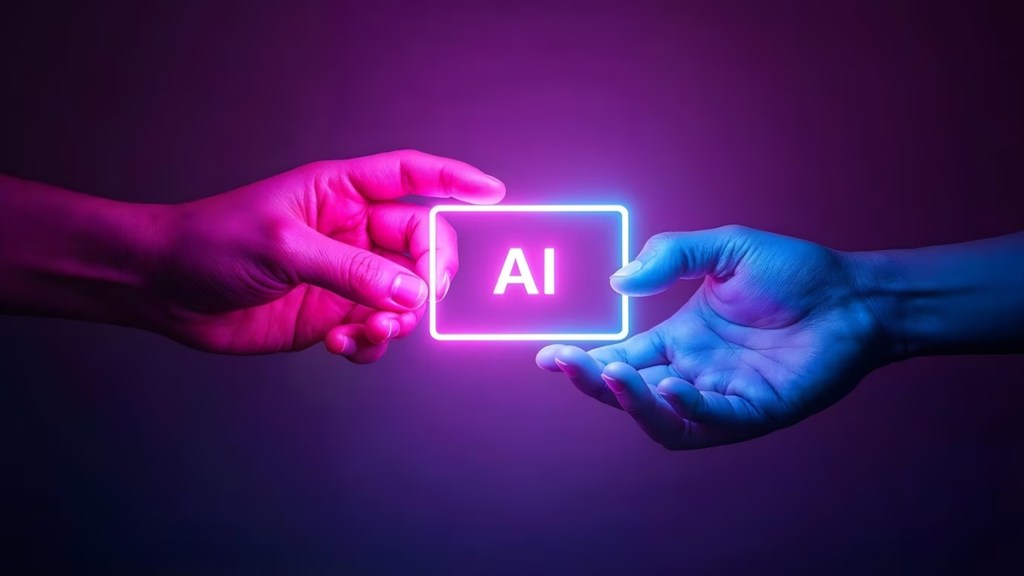By A Damodaran
The flurry of activity in the global tech scene since January indicates the changing complexion of the race for artificial intelligence (AI) supremacy. DeepSeek (DS), a Chinese AI company, officially released its super chatbot DeepSeek-R1 (DS-R1) on the day Donald Trump assumed office. With its mix of high inference capabilities, low computing costs, and zero application programming interface fees, DS-R1 has become a global sensation, sending tremors to US tech giants operating in the generative AI (GenAI) space.
India soon followed suit by announcing its target of launching “indigenous, affordable, and secure AI models” by the year-end. The incentive package positioned to support the programme includes “state-of-the-art” computing facilities (resting on a stockpile of 18,693 graphics processing units or GPUs) and a grant of 40% computer subsidy to developers. The latter is designed to bring down the per hour computing costs of India’s indigenous AI models to a third of the global average.
Although widely viewed as a catch-up game between two Asian powers, India and China are proceeding in different directions as far as GenAI is concerned. While China is aggressively targeting international markets for its models, India’s GenAI push focuses on deploying its home-grown AI models in critical sectors of national importance, like agriculture, health, and education.
Managing trade offs
Despite untiring research efforts, the world’s leading AI companies are yet to develop GenAI models that combine robust performance with high efficiency. Even advanced reasoning models like GPT-4 suffer from latency and slow response time, which makes them less efficient than small language models (SLMs), although the latter lag large language models (LLMs) on the performance front.
Distilled models (DMs) stand in between. While they solve complex multi-step problems, they are relatively less efficient than SLMs.
A country of India’s scale and diversity cannot be confined to a single AI model type. India needs foundation models and LLMs for advanced research in defence, national security, and atmospheric studies. For predicting an adverse natural phenomenon of complex nature like the mass flowering of the Kurz bamboo species in Mizoram, DMs may be used. On the other hand, when it comes to answering a Mizoram farmer’s query in her native language, a small or medium-sized natural language processing model works best, as the E Bhashini experience shows.
Given the high capital costs associated with the development of GenAI models, it is essential that AI models are appropriately deployed to secure the best outcomes. Using a model like GPT-4 to look for medical stores selling surgical masks would be a sheer waste of GPU processing power.
Open source or open weight
LLMs such as LlaMA 2 and DS-R1 follow the “open weight” (OW) system of disclosure. The OW system permits users of these models to fine-tune the parent model to meet customised requirements. OW also enables researchers to test the fairness and safety features of a model.
Unlike OW AI models, open source (OS) models like Mistral and Falcon not only disclose weights and codes but also information on data sets. These models permit users to undertake unlimited modifications to the parent model and create new models.
India’s AI4Bharat, by making its extensive data sets available for free, has demonstrated how a “pure” OS model can create wide-ranging public good impact. The India AI data set platform is also premised on open-access principles. Thus, there is a compelling environment for India’s upcoming indigenous AI firms to embrace the OS pathway, except when these models are linked to proprietary data.
Safety, transparency, and bias
DS models have been criticised for plagiarism, bias, violation of user safety, and selective information filtering. DS has also been accused of not opening the training data of its models for external review. The OW characteristic of DS models certainly allows researchers to test them for potential algorithmic bias. However, since DS models are not OS, the company can stonewall demands for disclosing training data. This could lead to DS models facing retaliatory action in overseas markets.
In contrast, India’s home-grown (and home-used) GenAI models will be predominantly subjected to nationally formulated AI safety standards, particularly in the wake of the recent Paris AI Action Summit deliberations, which appears to have shifted the responsibility for safety to national agencies.
Prompt quality
The Paris summit also raised the pitch for sustainability of AI systems. While low-energy computing can ensure the sustainability of LLMs, action is also called for on the user side to minimise “token wasting” prompts which are unsustainable. Ramping up user skills in prompt crafting ought to be a top priority for the IndiaAI mission.
Evaluation pointers
It is vital that indigenous AI models are tailored to India’s needs. This will ensure that these models are optimally deployed and sustainably used. Easy-to-deploy models promote quality problem solving, thereby improving the delivery of critical public services. Indeed, improved versions of such models could spur secondary innovations and have far-reaching impact on the economy.
The writer is former faculty, IIM Bangalore, and visiting professor, Ahmedabad University.
Disclaimer: Views expressed are personal and do not reflect the official position or policy of FinancialExpress.com. Reproducing this content without permission is prohibited.

